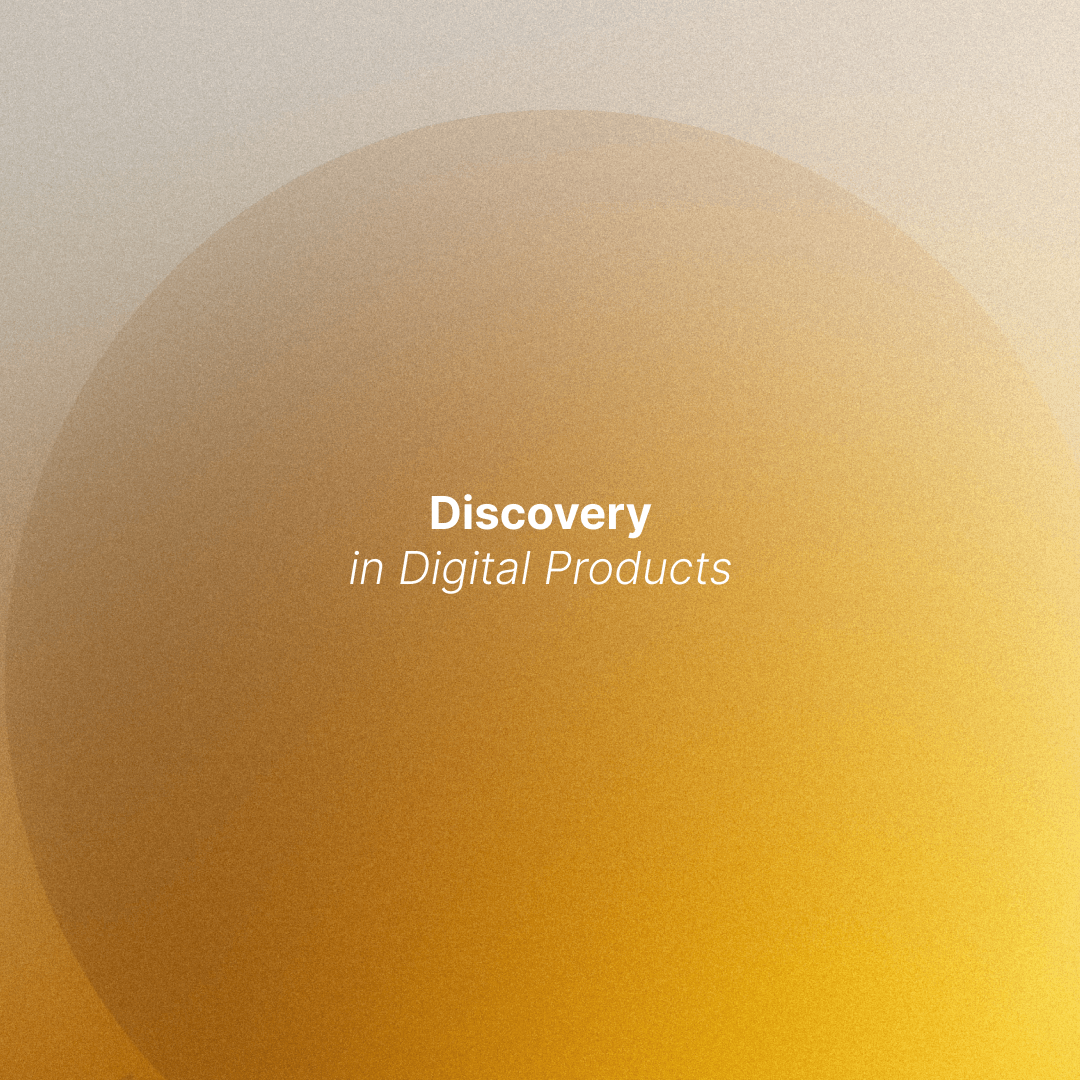As we mentioned in an article we published earlier to answer why you should start your digital product with an MVP, statistics show that 90% of the new products around the world fail every year. The majority of the time, the reason why is not validating your assumption that there is a demand for your idea. We publish articles on digital products weekly to answer why and ways to protect your product from it. This time, we will focus on one of the most important phases: product discovery.
Underestimating the discovery phase is one of the most critical mistakes you can make for your digital product. That’s why we planned this article as an introductory post with some basics and a few tips about this stage, which is critical even to decide whether the product will exist or not.
Therefore, we will explain the discovery phase in digital products, what product discovery and continuous discovery are and how we approach discovery at tio, along with practical tips and advice on how to successfully apply it to your own product.
What Makes Product Discovery Important?
When you start the process, you only have a good idea. Regardless of how brilliant it is, it stands on assumptions. Your first assumption is that: there is a problem in something and you can solve this problem. In other words, you think you find a worthy solution for a pain point.
Secondly, what turns this idea into a product is that there is enough demand for this solution. (By the way, if your solution is actualized via digital technologies, your product is called a digital product. This is an earlier article you can read for a deeper understanding on digital products.)
At this point, you don’t know the market, users, competitors or anything else, at least you don’t know them exactly. Discovery phase is where all of these start to shape.
Let’s jump into what is it:
What Exactly is Product Discovery?
The product discovery is the first stage of the product design and development. Discovery phase assists product teams in refining their ideas. A well-structured exploration should provide a full understanding of real users’ problems and identify the best possible ways to solve these problems, taking the unique incidents of the targeted market into account.
Ultimately, there are no shortcuts to develop an empathy for users. However, we can offer an approach that you can take by supporting the necessary decisions and actions with data at every stage. Continuous discovery is one way to continually support your decisions with data.
We implement a lean approach to digital products in both tio-lab and tio-studio. We follow a learn-build-measure cycle on our development process because product discovery is something that never ends. Since, we generally start with an MVP as quickly as possible and iterate the product after validation to its vision over time with versions, we basically always discover. Our approach also has a widely accepted name: continuous discovery.
What is Continuous Discovery?
Continuous discovery is a part of the learn-build-measure framework we adopted. It is a perspective where you use data and insights from research as input in the product development process.
Continuous discovery has a clear flow. By getting direct input from potential users, we are able to make better decisions even at the very beginning of the process. By better understanding our users, we can better meet their needs at the right time. By asking questions we can strengthen our ideas and make them real faster.
Continuous discovery not only ensures that product roadmaps are based on actual data, but also offers a chance to optimize products as users discover new ways to use it. The product is constantly evolving so an iterative approach will be increasingly beneficial for businesses that want their customers to stay with them for the long-term.
At the end of the day, continuous discovery helps product teams modify or abandon their existing product plans at any point in a project, and it’s one of the best ways of creating a product people actually want to use.
BONUS: 3 Tips You Can Use For Product Discovery
#1:
In the lean approach, discovery involves a series of efforts to validate the idea. If you want to validate your idea without even starting the discovery process with real user data, you can start with small efforts that can be seen as the MVP of MVP.
Create a simple social media ad and start gathering data from real users by testing your assumptions and see the interest in your idea. To scale things up a bit, you can create slightly different versions of these ads and see exactly which part of your idea is interesting to your users.
A/B test is one of the most fundamental validation techniques especially when it comes to digital products since it’s possible to conduct A/B tests with a little effort and investment in the age of social media. Here is an article that includes everything you need to learn about A/B tests.
#2:
Empathy mapping is another way we frequently use in the discovery phase. It is a structured way of asking the user what they are doing, seeing, hearing, thinking, and feeling. You can also check our entry for empathy mapping in the digital product glossary.
#3:
Discovery as a service:
After 100+ projects and 20+ products, we had a lot of tools and frameworks to construct this process we’d use for both our products and our partnerships.
Contact tio for a discovery workshop where we can use our tools and methods for your idea.

